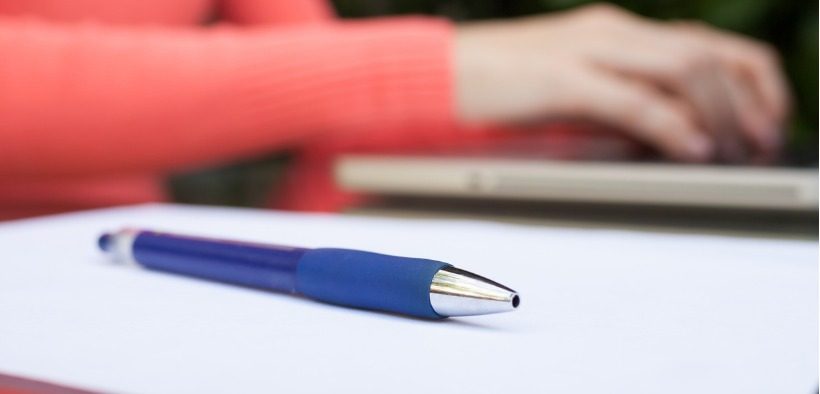There are lots of reasons and research that support students taking their own notes as opposed to relying on teacher-provided notes and/or slides. What’s changed of late is how today’s students take notes.
Research from 2012 (cited in the reference below) reported that almost a third of students were taking notes with laptops. One suspects that percentage would be even higher today. Of current interest to researchers is the question of whether it makes a difference if students take notes electronically or write them longhand. Four studies (all published since 2012) have considered that question and all four agree on a couple of points.
- Students taking notes electronically record more information. That would seem to be a good thing—the more complete the notes, the better. But there’s a problem with what ends up in electronically taken notes. There’s more copied down material, word-for-word what the teacher said. It’s a stenographic form of note-taking that the researchers describe as a non-generative transcription process.
- Students who take notes longhand are more likely to put information from the lecture in their own words. They have fewer words, which is understandable. Most of us can type faster than we can write. Students taking longhand notes use more generative processes and do more things to make the content understandable to them.
- Laptop note-takers accrued more process benefits of note-taking. Capturing exactly what they were hearing required minimal cognitive processing and so at that moment they were learning more. They had notes that were more complete.
- Longhand note-takers gain more product benefits. When they looked at their notes, they had content that made sense to them because they used more of their own words. They also had more visual materials in their notes.
- “When there was ample processing time during review, the more generative longhand notes proved to be a better review source than the more transcription-oriented laptop notes.” (p. 963) Said a bit more clearly and directly, if students aren’t going to review their notes, whether they take them electronically or by hand probably doesn’t make much difference. But if students are going to review their notes, those taken longhand provide a better review than those taken electronically.
In terms of achievement, findings from the four studies are inconsistent. In one study, if the notes were not reviewed, those taking notes on a laptop had higher achievement scores. A second study found just the opposite. Meanwhile, if notes were reviewed, the results were again mixed. Part of the inconsistency may be the result of the different study designs.
The most recent study (referenced below) does an excellent job of highlighting the previous research and incorporating aspects of those studies in their design. The authors systematically investigated the process and product function of note-taking as well as the medium (laptop or longhand) in terms of achievement. The process function relates to the benefits accrued by writing something down rather than just hearing it. The production function involves the value that comes from having a set of notes after the fact (as in when you need to review for the exam). They examined these variables using more authentic course material and for the first time looked at how visual material was recorded and whether recording images affected image-related achievement.
Here’s a summary of their findings.
As these researchers note, this research is in its infancy and these studies are still not replicating actual note-taking conditions. For example, in order to control for extraneous variables, students in these studies are not reviewing their notes two or three weeks after having taken them or reviewing notes taken across six or seven different class sessions. They are simply taking one set of notes, and either not reviewing them and answering test questions about the lecture or briefly reviewing their notes shortly after they’ve taken them and answering test questions about the lecture.
At this point, the findings are definitive in terms of what ends up in laptop and longhand notes, but less conclusive as to the effects of the medium on achievement. However, if students plan to review their notes (and most students do plan to review), the better bet is to close the laptop and take out a pen and paper.
Reference: Luo, L., Kiewra, K. A., Flanigan, A. E. and Peteranetz, M. (2018). Laptop versus longhand note taking: effects on lecture notes and achievement. Instructional Science, 46, 947-971.






